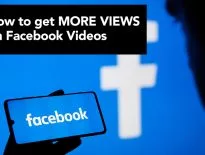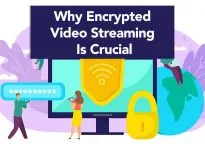
Find out how DRM tools restrict the unauthorized use of copyrighted materials, and what the future holds for these technologies.
The Internet has profoundly impacted every aspect of modern life. It has enabled an entirely new level of access to art, entertainment, and media of all kinds.
For content creators, this has been both wonderful and challenging. Artists, musicians, and entrepreneurs have never been able to broadcast their work so easily. At the same time, that work has never been easier to steal.
This makes it very hard for content creators to enforce their intellectual property rights. Digital piracy is a constant concern for anyone who creates text, music, art, video, or code for a living.
Digital rights management (DRM) technology refers to a range of security solutions that prevent digital piracy. Many content creators rely on this technology to restrict what users can do with their content.
What Does “DRM-Protected” Mean?
You might be wondering “what is DRM, exactly?”. The DRM definition applies to any file that has some kind of restriction against unauthorized use in place. Usually, these files require authentication for users to do certain things to them.

Some of the most common restrictions are against copying, using media multiple times, or displaying media on multiple devices. Since DRM protections are coded into the file itself, they can be as simple (or as complex) as the content creator wishes.
Some forms of DRM protection require users to play the file using a specific application. This is a convenient way to lock content into a single software environment. It gives the content creator a degree of control over how the content is used and distributed.
Other forms of DRM protection ask users to provide a password before making changes to the file. This method is less popular among artists, musicians, and video producers. Inventors and programmers are more likely to use this form of DRM protection.
How Does DRM Work?
Most DRM solutions use some form of cryptographic encryption to protect content. Encryption is a technology that conceals information by altering it according to a secret pattern.

The role that encryption plays changes based on the type of content it needs to protect. Here are some examples of different ways companies have used encryption to protect their intellectual properties:
- Video games may generate a unique code upon installation. Then, the game may periodically send that code to an online server built by the game developer. As long as the code matches the one on file with the game developer, it means the user is playing a legitimate version of the game.
- Music players may verify whether users have permission to copy a music file off the computer. The music file itself may be encrypted and require the developer’s permission to decrypt the file and enable copying.
- Professional software applications may send users a physical USB stick that contains an encrypted code. The software will check if that unique USB stick is inserted before starting. In most cases, the user will not be able to start the application without the stick.
- Online video players may not allow users to download video files. Right-clicking on the video won’t generate a menu where the user can select Save As. Instead, it will generate a pop-up that explains the video is DRM protected.
These are just a few methods that content creators use to protect their intellectual property rights. Generally, the more expensive a digital product is, the greater the lengths its creators will go to protect their investment.
For example, back in the 2000s Apple attached DRM protections to all music files downloaded through iTunes. At the time, downloading a single song generally cost $0.99. Users could disable the DRM system that Apple chose to use with a few clicks. This presented almost no obstacle to digital pirates of the time. DRM protected music is still widely available online.
At the other end of the price spectrum, professional video editing software can cost thousands of dollars. It’s not uncommon for developers to create elaborate, multi-tiered authentication schemes in order to beat digital piracy. DRM protection is an extremely important part of their business strategy.
How to Check if Files are DRM Protected
There are multiple ways to check if files are DRM protected. Each method is best suited to a specific file type.
- Music and video files typically display their protection status in the file metadata. In Windows, you can view this by right-clicking on the file, opening the Properties menu, and clicking on the Details Where it says Protected, you’ll see a clear “Yes” or “No”.
- Folders containing media files work in a similar way to music and video files. If you open up the Properties menu and click on Details, you’ll see a list of every file in the folder along with its DRM status.
- Commercial movie files that come from legitimate sources are always DRM-protected. Copied discs, downloaded DVD file images, and movies purchased from illegitimate sources are not protected. There is also no guarantee against illicit movie files containing malware, viruses, or ransomware.
- Ebooks from legitimate online retailers like Amazon or Apple are always DRM-protected. You can verify an ebook DRM through your e-reader software. Most e-reader applications allow users to right-click on titles and look through the file’s Properties to see if there are DRM protections on the file.
Major companies like Amazon and Apple have been working on DRM protection for decades. Apple’s early DRM attempts were not successful. Amazon’s Kindle DRM solution makes it difficult for users to copy books even today.
These companies (and many others) continue to invest in research that enables content creators to earn money for their work. The latest research into blockchain technology and non-fungible tokens (NFTs) offer promising methods to improve the effectiveness of DRM technology.
DRM for Securing Content Online
Streaming and hosting services are important for the management of the intellectual property and digital rights. Content creators who release their work on platforms that support the monetization of their work (and protect against losses) have a better long-term business than those that don’t.

In the case of media streaming services like Spotify, DRM is built into the platform. Most Spotify users don’t download their digital libraries at all. Those that do cannot easily access or play their music files on any other device or application. This enables Spotify to pay its content creators – how much it pays is another question.
But Spotify doesn’t host songs that artists upload. It purchases digital distribution rights from record labels. The other way that content creators enable DRM management for their work is through hosting.
Media hosting services have to ensure some level of DRM protection to content creators. Unsurprisingly, some hosting platforms are better at this than others. Intellectual property advocates and rights organizations frequently target YouTube because it doesn’t do enough to protect content creator’s work.
Reputable video hosting platforms with built-in DRM solutions are far better equipped to protect content creators from digital pirates. Services like Cincopa are able to utilize best-in-class DRM technology to maintain intellectual property rights and support creators.
Cincopa is a video hosting platform that provides content creators with robust analytics and secure, role-based user permissions. Find out how we can help you protect your video content.









